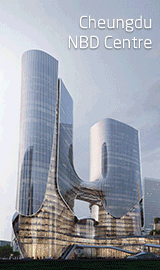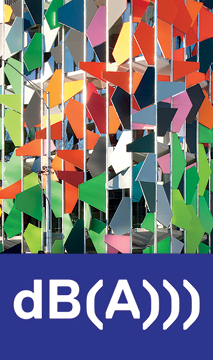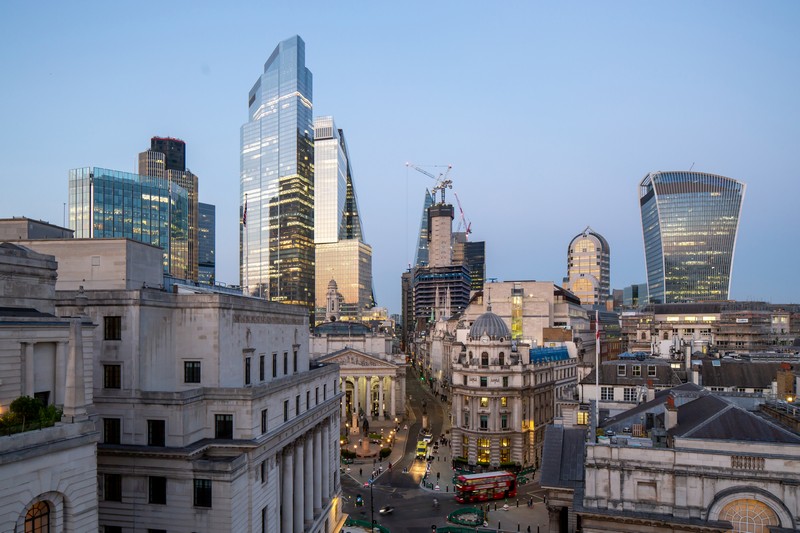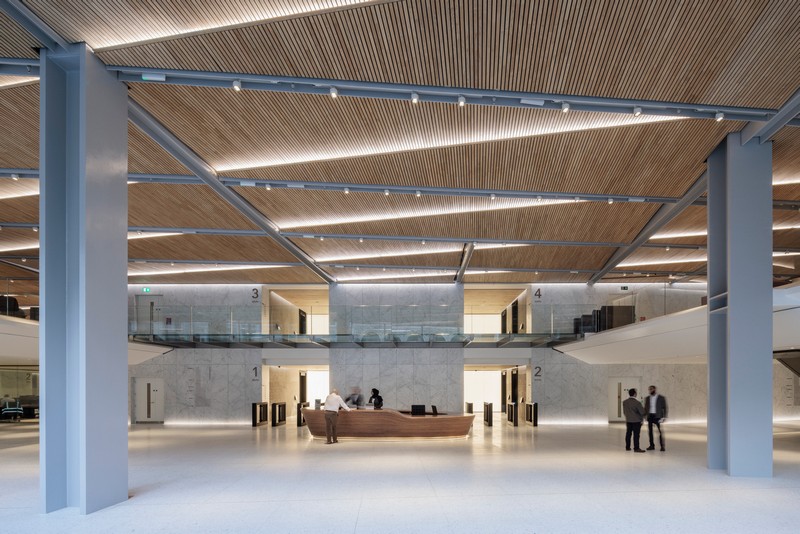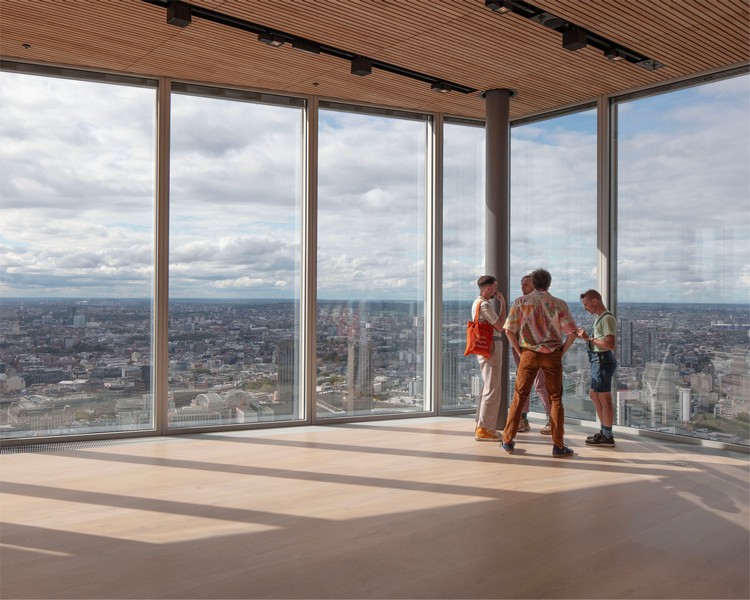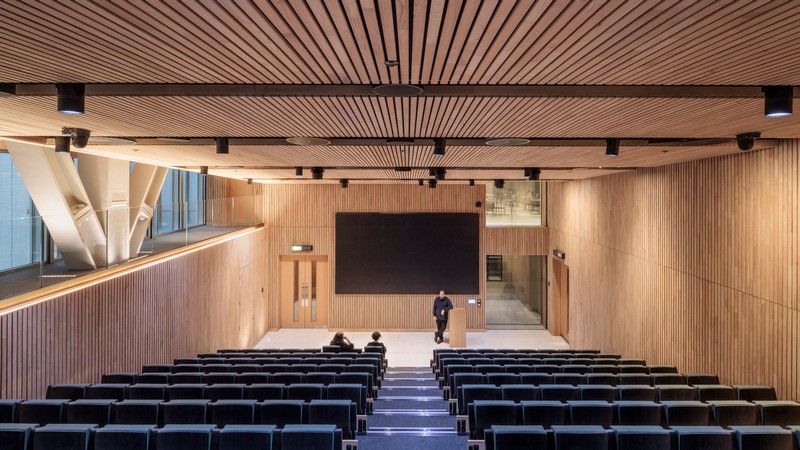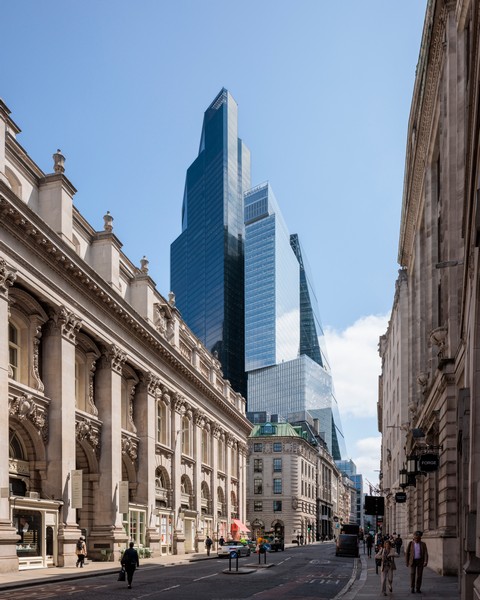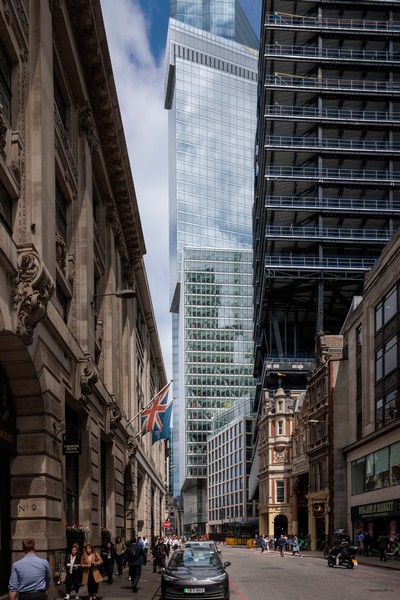8 Bishopsgate is a precision-built tower that redefines façade performance and structural integration in high-rise design. WilkinsonEyre’s approach prioritises sustainability, clarity and civic contribution—making it a benchmark for speculative commercial buildings in the UK.
Located in the City of London’s eastern cluster, 8 Bishopsgate responds to stringent planning constraints, including the London View Management Framework and protected views from Fleet Street to St Paul’s Cathedral. The building’s stepped massing mitigates visual impact and breaks down the tower’s scale into three distinct blocks. Each block is differentiated by material, structural logic and scale, contributing to a legible and dynamic composition.
The tower reaches approximately 200 metres and comprises four stacked volumes. Designed by WilkinsonEyre, the building includes flexible retail space at the base and a public viewing gallery at the top. The architectural concept is driven by performance, clarity and civic accessibility.
Structural Strategy & Material Efficiency
8 Bishopsgate is a structurally light tower, achieved through rationalised steel design and strategic integration of services. A steel-braced box at the core enables cantilevers on the west façade, eliminating the need for transfer structures and increasing usable floor area. Steel sections were calculated to match individual load requirements, reducing overall tonnage. Compared to typical towers of similar scale, the frame uses 25% less steel, contributing to lower embodied carbon.
The structure and services are fully integrated into the architectural vision, allowing for efficient spatial planning and reduced environmental impact. The stepped profile also accommodates terraces and cantilevers, enhancing the building’s visual rhythm and functional flexibility.
The building envelope is defined by a high-performance Closed Cavity Façade (CCF) system, engineered and installed by Permasteelisa Group. A total of 37,750 square metres of unitised façade and 700 square metres of stick system were deployed. Materials include aluminium, glass, glass-reinforced concrete (GRC) and stone. The CCF system delivers airtightness, thermal efficiency and adaptive shading, reducing cooling demand by 530kW (5%).
Known for its engineering expertise and innovative façade technologies, Scheldebouw’s bespoke façade solution achieved Environmental Product Declaration (EPD) verification and was instrumental in securing the building’s BREEAM Outstanding and EPC A ratings. The double-skin envelope enhances daylight penetration and internal comfort, aligning with the project’s sustainability goals and user-centric design intent.
Operational Performance
8 Bishopsgate is recognised as the UK’s most sustainable speculative tall commercial building. Embodied carbon was tracked at each design stage using RICS methodology, enabling targeted reductions. The façade’s performance, material optimisation and smart building systems contribute to long-term operational efficiency.
The UN sustainable development goals have been at the heart of project decision-making, resulting in a tower that demonstrates holistic sustainability, balanced with occupant health, wellbeing and operational needs.
This user-centric building has been designed to enhance health and wellbeing, offering adaptability through smart building systems, flexible HVAC design and a wide range of tenant amenities. Cycle facilities accommodate nearly 1,000 bikes, with generous provisions for showers, lockers and maintenance.
The tower was the first in the UK to achieve both BREEAM Outstanding and EPC A ratings.
Approximately 10% of the building is dedicated to tenant amenities, including cafés, lounges, flexible workspaces and a retractable 200-seat auditorium. The ground floor includes a public café, while the top level features The Lookout, an admission-free viewing gallery offering panoramic views of London. These elements reinforce the building’s civic contribution and accessibility, extending its impact beyond commercial tenancy.







